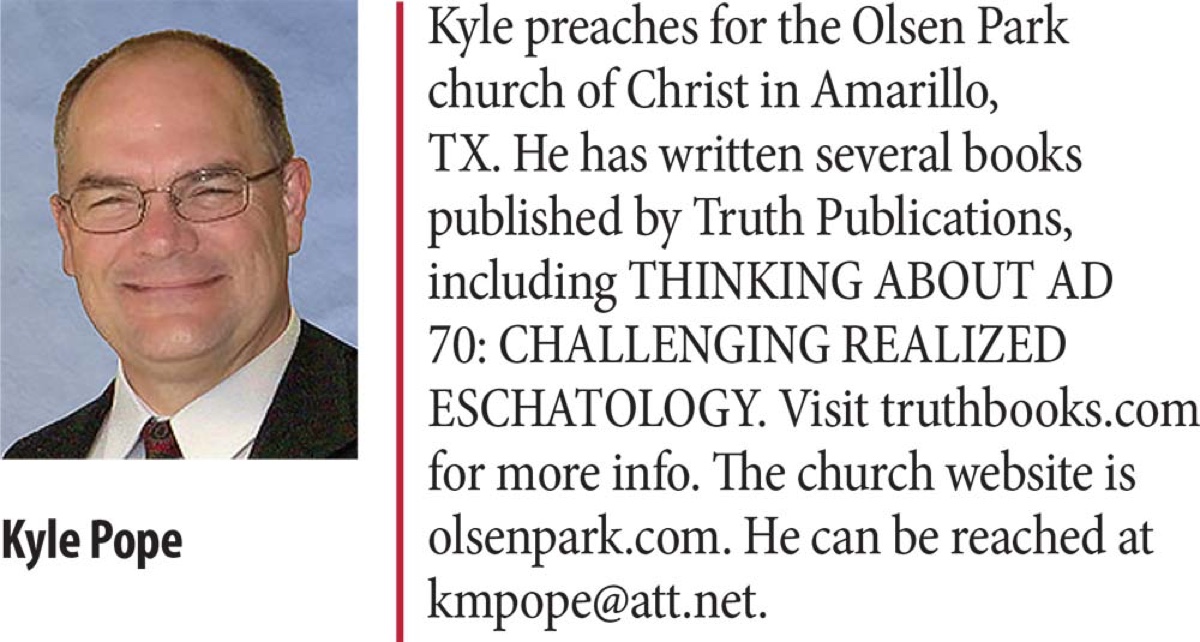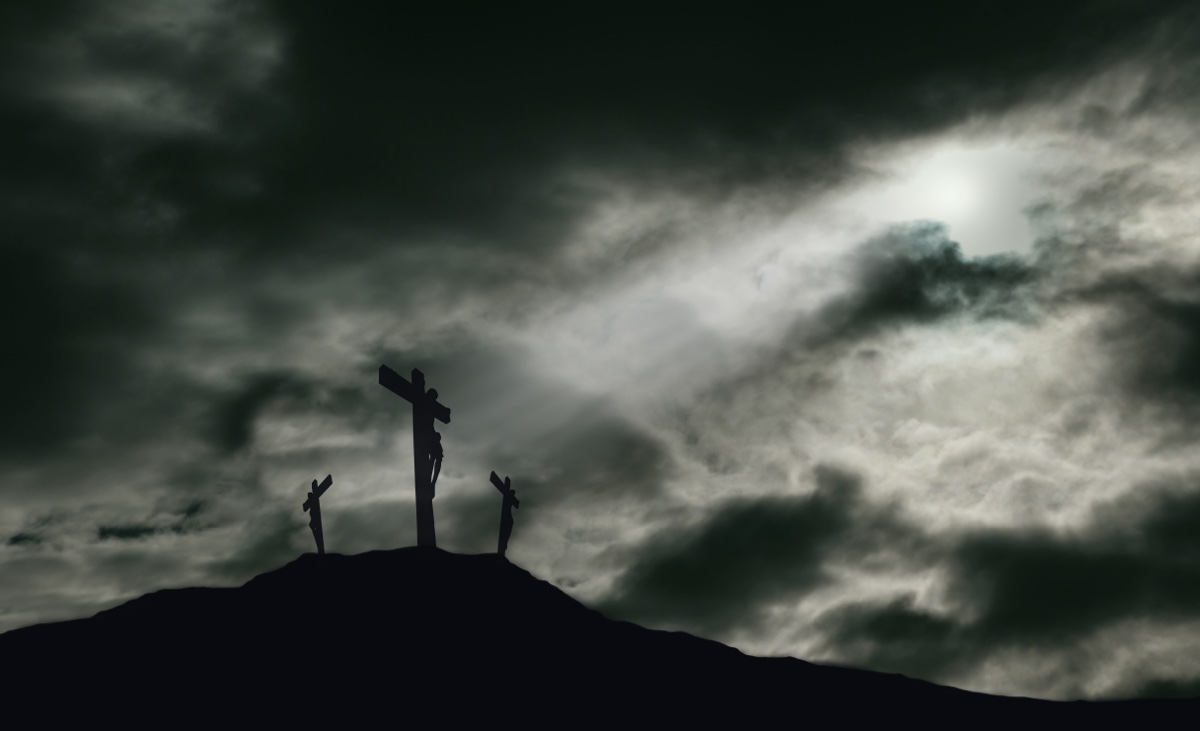
by Kyle Pope
Synopsis: Evidence of God is seen in the created world and in His special revelation (Ps. 19; Rom. 1:18-20). While skeptics revile Christianity as unscientific, the testimony of Sacred Scripture is supported by science, history, and archaeology.
In recent years, geological research on sediments from the Dead Sea appears to show evidence of the earthquake recorded in Matthew. While the validity of Scripture is not dependent upon scientific confirmation, such evidence shows, yet again, that biblical accounts are historically accurate.nThe Bible records many dramatic events that took place in connection with the death and resurrection of Jesus. While on the cross, “from the sixth hour until the ninth hour there was darkness over all the land” (Matt. 27:45; cf. Mark 15:33; Luke 23:44). Upon His death, “the veil of the temple was torn in two from top to bottom; and the earth quaked, and the rocks were split” (Matt. 27:51; cf. Mark 15:38; Luke 23:45, NKJV). When this happened, Matthew tells us that tombs were opened and some of the dead were resurrected back to life and appeared within the city (Matt. 27:52-53). Upon the resurrection of Jesus, “there was a great earthquake; for an angel of the Lord descended from heaven, and came and rolled back the stone from the door, and sat on it” (Matt. 28:2). Are these accounts merely examples of literary hyperbole, or did these things really happen?
Those who believe in the atoning death and resurrection of Jesus and the divine inspiration of the Bible have no problem answering this question. Yes, they really happened! When God in the flesh laid down His life as a sacrifice for sin and then overcame death, nature itself was moved in response to that event. Nevertheless, for those who have not yet come to recognize these tenets of faith, in recent years, researchers have made some intriguing discoveries which appear to show that nature bears further witness to the reality of these events.
In December 2011, geologist Jefferson B. Williams (in association with other researchers) published an article in International Geology Review entitled “An Early First-Century Earthquake in the Dead Sea.” Williams analyzed layers of sediment deposits from the Dead Sea that are now exposed due to the continuing drop in the water level of the lake occurring over the last centuries. The surface elevation of the Dead Sea is now 427 meters (or about 1370 ft) below sea level. In the past, it was 250 meters (or about 800 ft) higher. This drop has left visible layers of striation all around the rim of the lake, similar to formations called “Spanish Skirts” in canyons in the American Southwest. Most often these layers of sediment deposits form smooth straight lines, but an earthquake leaves a jagged layer that can be seen and analyzed for material within the deposit.
Williams worked in Ein Gedi, on the western side of the Dead Sea. His study built upon earlier work by German geologist Claudia Migowski, who had successfully correlated evidence of twenty-eight historically documented earthquakes to layers in the sediment deposits. These ranged from 140 BC to AD 1458. She utilized (as do most geologists) what are known as earthquake catalogs that compile dates from historical sources documenting when various earthquakes occurred. Often these catalogs draw upon previous catalogs, but do not always reveal the sources used. In 2004, Migowski had first identified a sediment layer showing evidence of an earthquake in AD 33 but had not addressed the historical source for the entry in the catalogs. Williams further studied the sediment deposits, and also sought to determine the historical source for the catalog entry. To his surprise, the only historical source he could find was Matthew 27:51.
It is unclear what his actual religious beliefs are, but Williams was not pushing a religious agenda. He is a geologist. In his study, Williams cited a 1983 work by Colin Humphreys and W. G. Waddington that estimated the likely date of the crucifixion on April 3, AD 33, based on astronomical calculations of the lunar cycles. However, Williams did not assign an exact date to the time of the earthquake. He estimated it could have been between AD 26-36 (based on Roman sources regarding the rule of Pontius Pilate). The layers themselves, as revealed in the study, seemed to narrow this closer to AD 33, but he was probably being cautious in realizing how that could be seen within the scientific world.
A few months after his article was published, popular media reported on his study drawing from an article in Discovery News with titles such as, “Quake Reveals Day of Jesus’ Crucifixion, Researchers Believe” (NBC), “Jesus’ Crucifixion Date Possibly Friday April 3, 33 AD, According to Earthquake Study” (Huffington Post), or “Day of Jesus’ Crucifixion Believed Determined” (NBC). Sadly, such specific claims about his study damaged his reputation among secularists in his field. He became ostracized and violently attacked.
His study had merely explored the evidence. He had treated the text of Matthew as a historical source, not as an inspired text. Even so, the very fact that his evidence might correlate with the biblical record led some to view him as an outcast. He felt compelled to clarify his position. Bible History Daily, an online posting of the Biblical Archaeology Society, ran an article entitled, “Is Jesus’ Crucifixion Reflected in Soil Deposition?” Williams was allowed to add a postscript to it clarifying his position and charging Discovery News with having “grossly misrepresented our work.” Ultimately, he explained himself in an almost New Age type feature-length documentary entitled Crucifixion Quake, but the reaction to his work revealed just how aggressive opponents of faith can be toward anything that serves to reinforce the claims of Scripture.
If the sediment layers Williams and Migowski identified at Ein Gedi do, in fact, show evidence of the earthquake and its aftershock as described in Matthew, it doesn’t prove that Jesus was resurrected from the dead. Each of us must confront the inspired text of Scripture, evaluate its claims, consider the evidence, and choose to believe in things we were not present to witness. “Faith comes by hearing and hearing by the word of God” (Rom. 10:17). What studies of geology or archaeology show is that the accounts of Scripture are not framed in some make-believe fantasy world that comes from the imagination; rather, they are set in a real historical context with real people and actual places. This should encourage the believer and challenge the skeptic not to reject faith so quickly. 
Bazzi, Marco, Director. Crucifixion Quake. Indie Rights Movies, 2020.
Biblical Archaeology Society Staff. “Is Jesus’ Crucifixion Reflected in Soil Deposition?” Bible History Daily. June 4, 2012. https://www.biblicalarchaeology.org/daily/biblical-topics/crucifixion/jesus-crucifixion-reflected-in-soil-deposition/.
Hooda, Samreen. “Jesus’ Crucifixion Date Possibly Friday April 3, 33 AD, According to Earthquake Study.” Huffington Post. May 25, 2012. https://www.huffpost.com/entry/jesus-crucifixion-date-possible_n_1546351.
Humphreys, Colin J. and W. G. Waddington. “Dating the Crucifixion.” Nature. 306.22 (Dec. 1983): 743-746.
Viegas, Jennifer. “Day of Jesus’ Crucifixion Believed Determined.” NBC News. May 29, 2012. https://www.nbcnews.com/id/wbna47596864. Republished from a Discovery News article that is no longer accessible online.
———. “Quake Reveals Day of Jesus’ Crucifixion, Researchers Believe.” NBC News. May 24, 2012. https://www.nbcnews.com/id/wbna47555983.
Williams, Jefferson B. Williams and Markus J. Schwab and A. Brauer. “An Early First-Century Earthquake in the Dead Sea.” International Geology Review. 54.10 (Dec. 2011): 1219-1228. https://www.researchgate.net/publication/229810999_An_early_first-century_earthquake_in_the_Dead_Sea.


